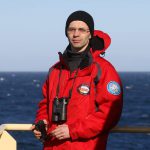Department of Atmospheric Physics and Geospace
Areas of Research
The department is engaged in research in the field of hydrometeorology, oceanology and geospace, carrying out long-term monitoring of physical parameters of the environment and organization of experimental work as well as data collection to support interdisciplinary research. Considerable attention is paid to the introduction of the latest measurement technologies and methods of obtaining information.
1.1. Measurements and monitoring under the program of the World Meteorological Organization.
This area of research assumes a strictly standardized procedure for collecting and processing the results of observations of the main meteorological parameters, in particular, the measurement of the total ozone content in the atmosphere. Antarctic Akademik Vernadsky station has one of the longest series of such observations in Antarctica (over 70 years), so its data are valuable for tracking climate change and require considerable attention to quality control and continuity.
Standard meteorological observations are operationally used to calculate weather forecasts in the world centers of meteorological information processing. In 2020, NASC participation in the international project Year of Polar Prediction was agreed, and this provides for the expansion of the standard observations program at Vernadsky station since 2022, as well as testing the possibility of using the latest types of information to improve weather forecasts. To maintain the proper level of these activities and observations, meteorologists at the station need appropriate technical and professional experience.
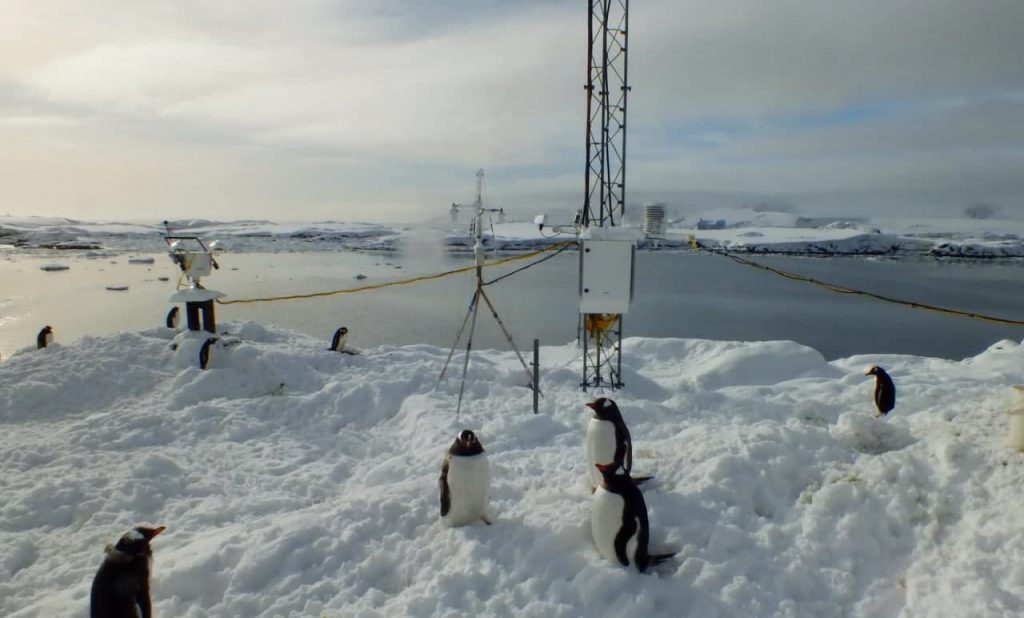
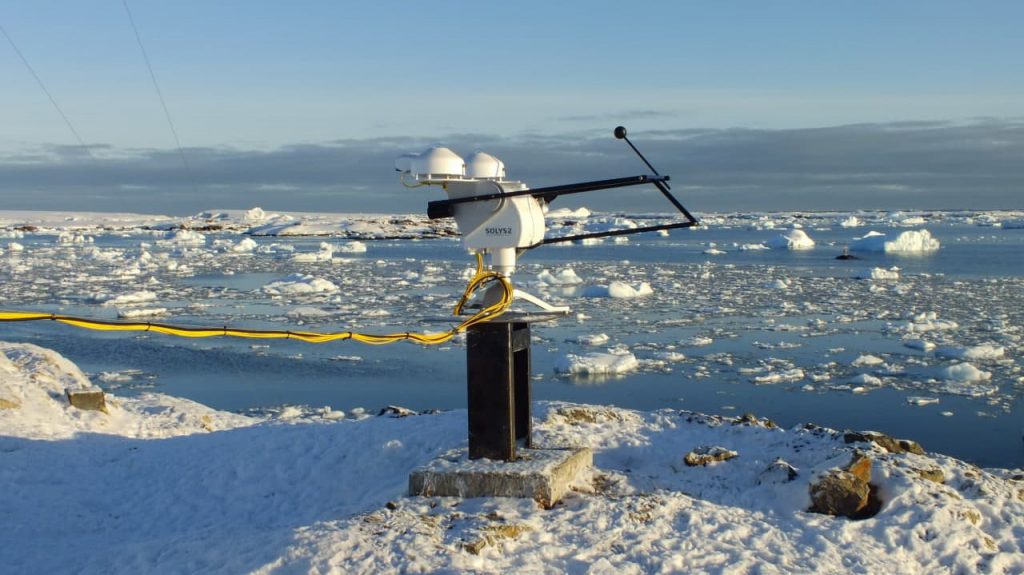
1.2. Studies of tropospheric-stratospheric interactions, the state of the ozone hole in Antarctica.
The ozone layer in Antarctica has both well-known features (the phenomenon of the ozone hole) and little-studied nuances of its behavior.
The department studies the relationship between the state of the ozone layer with the nature of atmospheric circulation, which, in turn, depends on the distribution of ocean temperature, but also has a certain variability. Estimates of ozone hole dynamics are developed on the basis of analysis of thermal, dynamic and ozone tropopause behavior, zonal asymmetry in ozone distribution. The studies compare information from different data sources: both the results of model reproduction and actual measurements from satellites or data obtained at Akademik Vernadsky station.
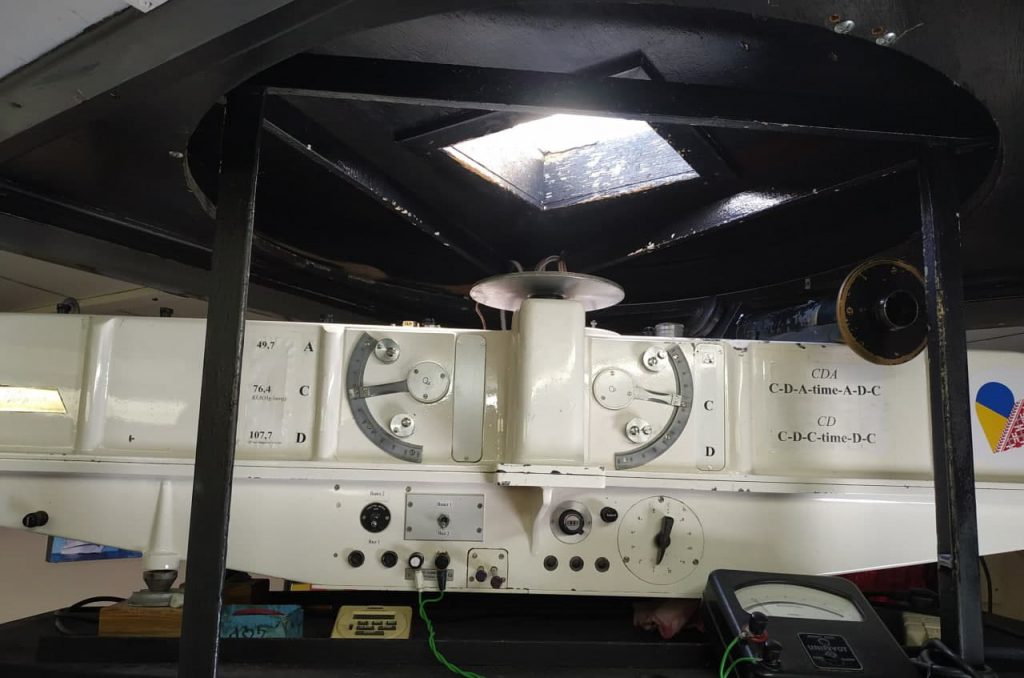
1.3. Study of regional weather and climatic conditions of meso- and micro-scales.
The location of Akademik Vernadsky station is special because it is at the junction of four elements and on the verge of spreading life to the south. The rocky mountains of the Antarctic Peninsula act here as a barrier to circumpolar currents in the atmosphere and ocean. They create local disturbances and from that – a significant variety of local weather and climatic conditions, atmospheric processes, mysteries of the landscapes of Antarctic oases and deserts.
Search, description and understanding of these processes is the first stage of this area of research, combined with the definition of links with other components of the biosphere and the impact on the ecosystem. Different methods of direct measurements, indirect relationships and modeling can be useful for this. The next step in this direction will be the assessment of microclimatic conditions and processes under the influence of global climate change and atmospheric circulation.
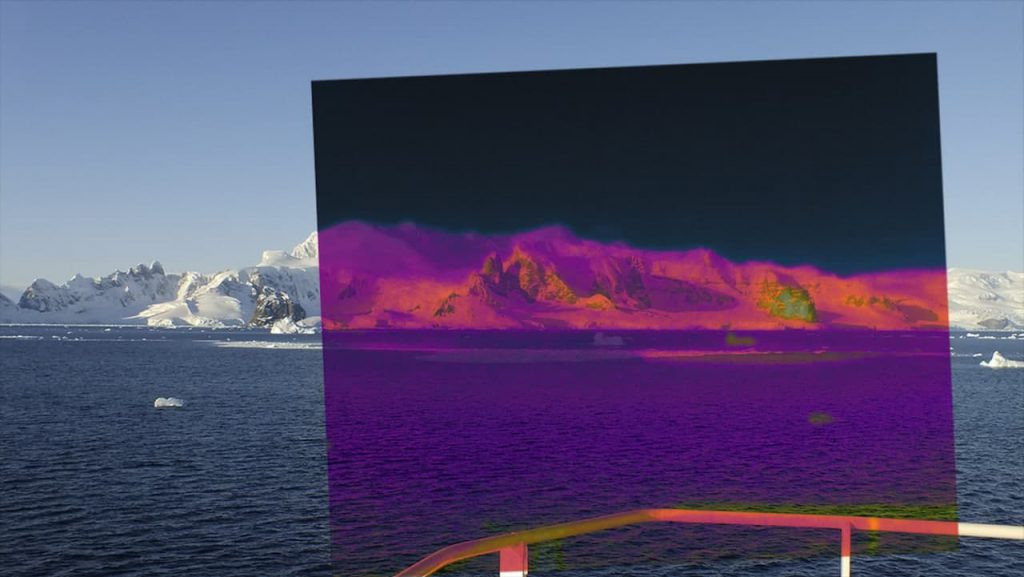
1.4. Study of the properties and processes of clouds and precipitation formation in the interaction with the underlying surface.
This area of research is due to the importance of the impact of precipitation and their phase state on the formation or degradation of glaciers, seasonal development of life on land. The research involves the use of the latest methods of observation, including radar, experiments on mathematical modeling of clouds and precipitation, as well as the balance of snow accumulation, in particular, in the long climatic timescale.
as well as the balance of snow accumulation, in particular, on a long climatic time scale.
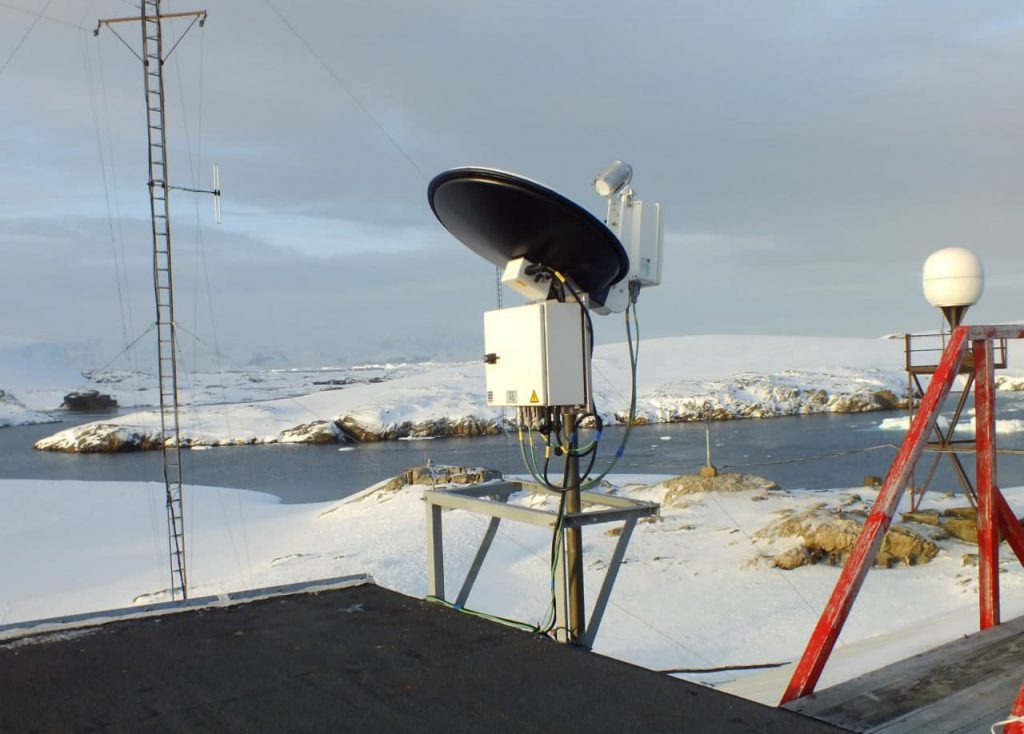
1.5. Study of the mechanisms of snow cover formation and dynamics.
The study is aimed at describing the processes that occur in the snow cover throughout the year, depending on the precipitation patterns, thermodynamic state and atmospheric humidity. Snow is the primary component of the cryosphere, responsible for its formation and maintenance in balance. It regulates the interaction of the underlying surface and the atmosphere, often acts as a trigger for certain physical processes, such as ice formation in the ocean, or a limiting factor in the development of terrestrial fauna and flora.
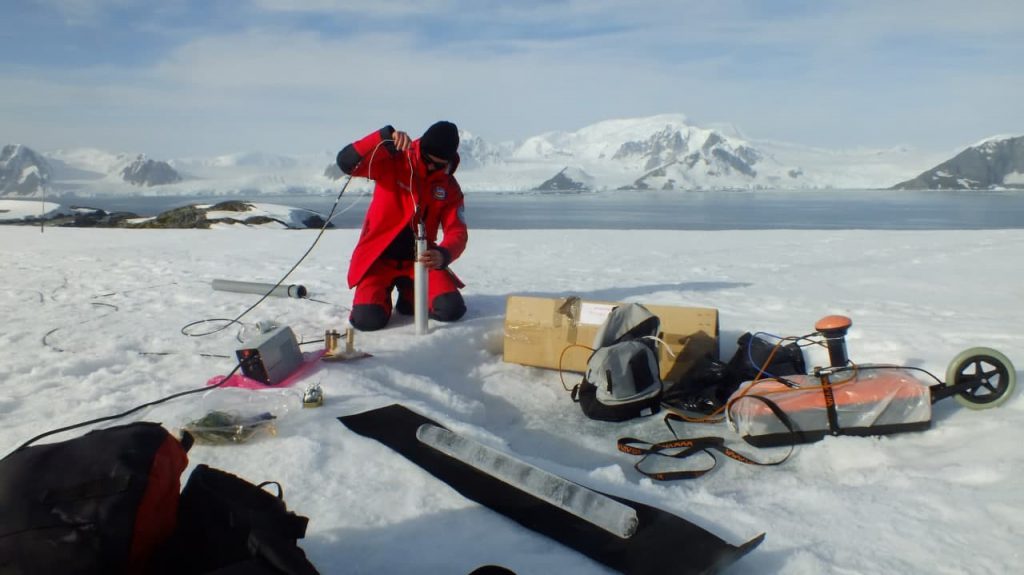
This scientific direction is conventionally divided into continuous coastal monitoring at Akademik Vernadsky station and expeditionary work in the ocean. The latter are aimed at a comprehensive study of hydrodynamic, hydrological, hydrochemical fields of the Southern Ocean using modern technologies, analysis of the dynamics of ocean fronts and the processes of formation of vertical water circulation and the structure of water masses of the Southern Ocean.
In addition, the methods of mathematical modeling are used to study desalination of waters of the Antarctic Peninsula shelf and its effect on the vertical structure of the temperature and salinity fields, formation of water masses, circulation and mixing processes, as well as biological productivity. All this is gaining additional relevance in the context of Antarctic climate changes.
This scientific direction is guided by the long-term focus of SCAR on global changes in the environment due to the pressure of civilization. Akademik Vernadsky station is currently one of the most developed electromagnetic observatories in Antarctica.
Modern monitoring observations of electromagnetic fields and signals at the station extend from ultra-low frequency to ultra-high frequency ranges. The equipment of the station and the scientific level of Ukrainian specialists made it possible to formulate tasks aimed at solving three topical scientific issues:
- Interaction of atmospheric and space weather systems;
- Monitoring of the global storm activity as an indicator of global climate change;
- Reproduction of human-induced impact on the electromagnetic climate of the Earth.
The first of them is solved by determining the energy transfer of natural and man-made disturbances from the Earth’s surface to high-altitude levels of the atmosphere and ionosphere and vice versa. This is how the interaction of two global weather systems – atmospheric and space – occurs. It is the region of the Antarctic Peninsula that is the optimal place for setting such scientific problems because:
- firstly, the region is geographically high-latitude, which affects the processes of photoionization of the ionosphere, and in the geomagnetic sense it is located near the giant ionospheric anomaly of the “Weddell Sea”;
- secondly, the proximity to the most meteorologically active Drake Passage and the orographic properties of the mountain coast of the Antarctic Peninsula provide a super-powerful release (conversion) of energy in the troposphere;
- thirdly, the presence of an atmospheric vortex at circumpolar latitudes makes it possible to experimentally study the space-time properties of the ozone hole and the conditions of sudden stratospheric warmings.
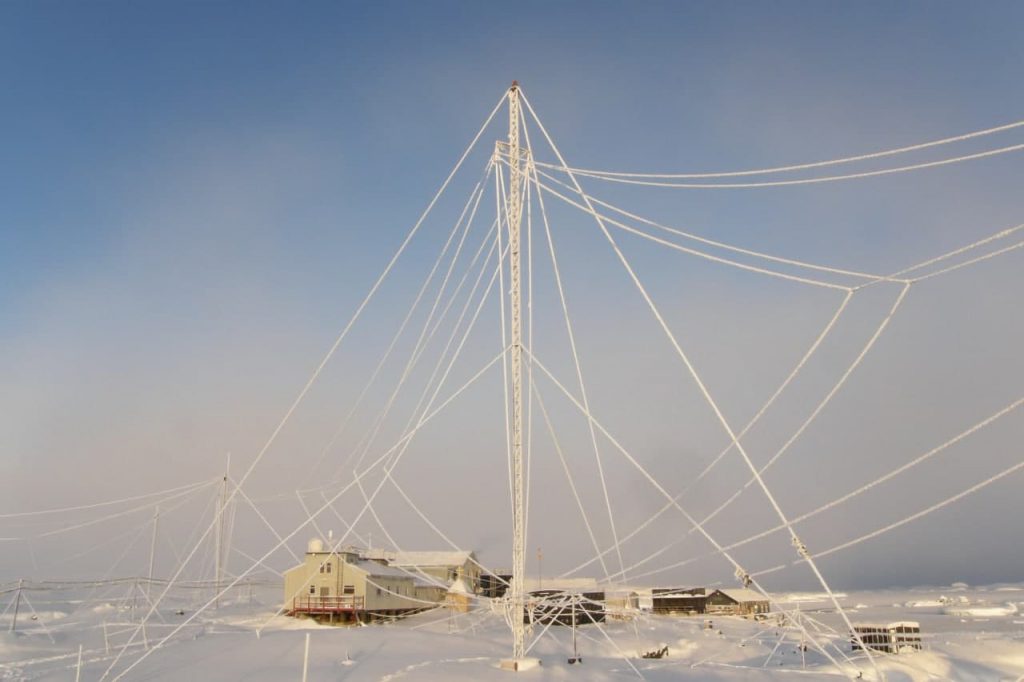
Regarding the second problem, it should be noted that global thunderstorm activity is an important climatic component, determined mainly by the temperature regimes of the air over the continents in tropical and middle latitudes. The solution to this problem is to assess global climatic changes by two-position (Antarctica – Arctic) registration of world thunderstorm activity in the ultra-low-frequency (ULF) range of electromagnetic waves and refinement of the energy of ultra-high-power lightning discharges in the very low frequency (VLF) range. It is in this low range that the main energy of radio emission from lightning discharges is concentrated. The idea of these researches is based on the facts established, in particular, as a result of work of the Ukrainian scientists. The propagation of electromagnetic waves between the Earth’s surface and the lower boundary of the ionosphere forms global waveguides of electromagnetic energy: the Schumann resonator and the Earth-ionosphere waveguide. Both natural electrodynamic systems provide the propagation of radiation over long distances with low absorption. But the optimal regions for electromagnetic observations of world thunderstorm activity are the polar regions, since local thunderstorms are absent here. Therefore, since 2002 at the Ukrainian Antarctic Akademik Vernadsky station, and since 2013 in the Arctic, on the Svalbard archipelago (Norway), continuous synchronous observations have been carried out.
The third mentioned problem is solved by the introduction of the concept of “electromagnetic smog” and its evaluation. Natural electromagnetic fields exist in an ultra-wide frequency range, from frequencies near zero to X-rays. The main sources of their origin are solar radiation, lightning discharges, magnetic field variations, cosmic electromagnetic background, and the like. It is important that the natural frequencies of natural resonance structures are close to the biorhythms of humans and many animals. In connection with the rapid modern man-made development of civilization, powerful artificial emitters have been added to the natural sources of the electromagnetic climate, including numerous power plants and power lines, broadcasting, communication and special ground and satellite-based radio emitters, sparking and power surges as a result of the operation of electrical equipment, and the like. Their radiation in individual spectral windows significantly exceeds the level of the natural background, and it can be defined as “electromagnetic smog”. Antarctica as a whole is an ideal place to study such phenomena, since it still remains a continent free from local technogenic sources of pollution. The flushing of artificial radiation to the sixth continent from industrially developed regions is carried out precisely due to the existence of natural waveguide and resonance systems. To the already noted advantages of the location of the electromagnetic observatory at Akademik Vernadsky station, we should also add the fact of its magnetic connection with the most industrialized region of the world – the east coast of the United States.
Cooperation
The Department of Atmospheric Physics and Geospace cooperates with the Ukrainian Hydrometeorological Center (UHC), Ukrainian Hydrometeorological Institute (UHMI) Central Geophysical Observatory (CGO), Ukrainian Research Center for Marine Ecology (UkrSCES), Institute of Radio Astronomy (IRA), Odesa State Environmental University (ODEKU), British Antarctic Survey (BAS), International Oceanographic Commission (IOC), International Atomic Energy Agency (IAEA), etc.
Scientific Publications
1. Koloskov O., Kashcheyev A., Bogomaz, O.; Sopin, A.; Gavrylyuk, B.; Zalizovski, A. Performance Analysis of a Portable Low-Cost SDR-Based Ionosonde. Atmosphere 2023, 14, 159. https://doi.org/10.3390/atmos14010159
2. Koloskov, O., Jayachandran, P. T., Yampolsky, Yu. (2023). On the performance of CARISMA – Akademik Vernadsky station Schumann resonance monitoring. Ukrainian Antarctic Journal, 21(1), 37–54. https://doi.org/10.33275/1727-7485.1.2023.705
3. Orr A. and Coauthors (2023). Characteristics of Surface “Melt Potential” over Antarctic Ice Shelves based on Regional Atmospheric Model Simulations of Summer Air Temperature Extremes from 1979/80 to 2018/19. Journal of Climate, 36, 3357–3383, https://doi.org/10.1175/JCLI-D-22-0386.1
4. Pishniak D., Razumnyi S. Measured and modeled vertical structure of precipitation during mixed-phase event near the West Coast of the Antarctic Peninsula. Ukrainian Antarctic Journal, 20 (1), 2022, https://doi.org/10.33275/1727-7485.1.2022.689
5. Khrystiuk, B., Gorbachova, L., Shpyg, V., and Pishniak, D. (2022). Changes in extreme temperature indices at the Ukrainian Antarctic Akademik Vernadsky station, 1951-2020. Meteorology Hydrology and Water Management, 10(1), pp.95-106. https://doi.org/10.26491/mhwm/150883
6. Gorbachova L., Khrystiuk B., Shpyg V., Pishniak D. (2022). Estimation of tendencies, homogeneity and stationarity of air temperature at the Ukrainian Antarctic Akademik Vernadsky station during 1951—2020. Geophysical Journal, 44(4), 183–194. https://doi.org/10.24028/gj.v44i4.264848
7. Chyhareva A., Krakovska S. (2022). Climate projections over the Antarctic Peninsula region to the end of the 21st century. Part III: clouds and extreme precipitation. Ukrainian Antarctic Journal, 20(2), 188–202. https://doi.org/10.33275/1727-7485.2.2022.699
8. Shi Yu, Evtushevsky O., Milinevsky G., Klekociuk A., Han Wei, Ivaniha, O., Andrienko Y., Shulga V., Zhang C. Zonal Asymmetry of the Stratopause in the 2019/2020 Arctic Winter. Remote Sensing. 2022, 14, 1496. https://doi.org/10.3390/rs14061496
9. Zhang C., Evtushevsky O., Milinevsky G., Klekociuk A., Andrienko Y., Shulga V., Han, Wei, Shi Yu. The Annual Cycle in Mid-Latitude Stratospheric and Mesospheric Ozone Associated with Quasi-Stationary Wave Structure by the MLS Data 2011–2020. Remote Sensing. 2022, 14, 2309. https://doi.org/10.3390/rs14102309
10. Zhang C., Grytsai A., Evtushevsky O., Milinevsky G., Andrienko Y., Shulga V., Klekociuk A., Rapoport Y., Han W. Rossby Waves in Total Ozone over the Arctic in 2000–2021. Remote Sensing. 2022, 14, 2192. https://doi.org/10.3390/rs14092192
11. Goncharenko L.P., Harvey V.L., Randall C.E., Coster A.J., Zhang S.-R., Zalizovski A., Galkin I. and Spraggs M. (2022) Observations of Pole-to-Pole, Stratosphere-to-Ionosphere Connection. Frontiers in Astronomy and Space Sciences 8:768629. https://doi.org/10.3389/fspas.2021.768629
12. Paznukhov V.V., Sopin A.A., Galushko V.G., Kashcheyev A.S., Koloskov A.V., Yampolski Y.M., Zalizovski A.V. Occurrence and characteristics of Traveling Ionospheric Disturbances in the Antarctic Peninsula region. J. Geophys. Res. Space Phys. 2022, 127, e2022JA030895. https://doi.org/10.1029/2022JA030895
13. Stanislavsky L.O., Bubnov I.M., Yerin S.M., Zalizovski A.V., Lisachenko V.M. The critical frequency of the ionospheric F2-layer as obtained from ionosonde data and observations of Solar radio bursts. Radio physics and Radio Astronomy 2022, 27(3): 203-212. https://doi.org/10.15407/rpra27.03.203
14. Koloskov O. V., Nickolaenko A. P., Yampolski Y. M., Budanov O. V. (2022). Electromagnetic seasons in Schumann resonance records. Journal of Geophysical Research: Atmospheres, 127, e2022JD036582. https://doi.org/10.1029/2022JD036582
15. Shvets A., Nickolaenko A., Koloskov A., Yampolsky Yu., Budanov O., Shvets A. Day after day variations of arrival angles and polarisation parameters of Q bursts recorded at Antarctic station “Akademik Vernadsky”, Journal of Atmospheric and Solar-Terrestrial Physics, Volume 229, 2022, 105811, ISSN 1364-6826, https://doi.org/10.1016/j.jastp.2021.105811
16. Komorin V., Dikhanov Yu., Bolshakov V., Popov Yu., Matsokin L.(2022). Variability of the oceanographic structures of the Southern Ocean by the FerryBox data. Ukrainian Antarctic Journal, 20(1), 44—54. https://doi.org/10.33275/1727-7485.1.2022.688
17. Reznychenko M., Bogomaz O., Kotov D., Zhivolup T., Koloskov O., Lisachenko V. (2022). Observation of the ionosphere by ionosondes in the Southern and Northern hemispheres duringgeospace events in October 2021. Ukrainian Antarctic Journal, 20(1), 18—30. https://doi.org/10.33275/1727-7485.1.2022.686
18. Chyhareva A., Gorodetskaya I., Krakovska S., Pishniak D., Rowe P. (2021). Precipitation phase transition in austral summer over the Antarctic Peninsula. Ukrainian Antarctic Journal, 1, 32—46. https://doi.org/10.33275/1727-7485.1.2021.664
19. Bozóki T., Sátori G., Williams E., Mironova I., Steinbach P., Bland E.C., Koloskov A., Yampolski Yu., Budanov O., Neska M, Sinha A., Rawat R., Sato M., Beggan C.D., Toledo-Redondo S., Liu Y. and Boldi R. (2021) Solar Cycle-Modulated Deformation of the Earth–Ionosphere Cavity. Frontiers in Astronomy and Space Sciences 9:689127. https://doi.org/10.3389/feart.2021.689127
20. Zalizovski A., Yampolski Y., Mishin E., Kashcheyev,S., Sopin A., Koloskov A. et al. (2021). Multi-position facility for HF Doppler sounding of ionospheric inhomogeneities in Ukraine. Radio Science, 56, e2021RS007303. https://doi.org/10.1029/2021RS007303
21. Shi Yu, Evtushevsky O., Shulga V., Milinevsky G., Klekociuk A., Andrienko Y., Han W. Mid-Latitude Mesospheric Zonal Wave 1 and Wave 2 in Recent Boreal Winters. Remote Sensing. 2021, 13, 3749. https://doi.org/10.3390/rs13183749
22. Wang Y., Milinevsky G., Evtushevsky O., Klekociuk A., Han W., Grytsai A., Antyufeyev O., Shi Y., Ivaniha O., Shulga V. Planetary Wave Spectrum in the Stratosphere–Mesosphere during Sudden Stratospheric Warming 2018. Remote Sensing. 2021; 13(6):1190. https://doi.org/10.3390/rs13061190
23. Savenets M., Pysarenko L., Pishniak D. (2020) Microclimatic variations of land surface temperature on Galindez Island (western part of the Antarctic Peninsula). Ukrainian Antarctic Journal, 2, 3—15. https://doi.org/10.33275/1727-7485.2.2020.648
24. Pishniak D., Beznoshchenko B. (2020) Improving the detailing of atmospheric processes modelling using the Polar WRF model: a case study of a heavy rainfall event at the Akademik Vernadsky station. Ukrainian Antarctic Journal, 2, 26—41. https://doi.org/10.33275/1727-7485.2.2020.650
25. Evtushevsky O., Kravchenko V., Grytsai A., Milinevsky G. (2020). Winter climate change on the northern and southern Antarctic Peninsula. Antarctic Science, 32(5), 408-424. https://doi.org/10.1017/S0954102020000255
26. Grytsai A., Evtushevsky O., Klekociuk A., Milinevsky G., Yampolsky Y., Ivaniha O., Wang Y. Investigation of the Vertical Influence of the 11-Year Solar Cycle on Ozone Using SBUV and Antarctic Ground-Based Measurements and CMIP6 Forcing Data. Atmosphere. 2020, 11(8), 873. https://doi.org/10.3390/atmos11080873
27. Milinevsky G., Evtushevsky O., Klekociuk A., Wang Y., Grytsai A., Shulga V., Ivaniha O. Early indications of anomalous behavior in the 2019 spring ozone hole over Antarctica // International Journal of Remote Sensing. – 2020. – Vol. 41, N 19. – P. 7530–7540. https://doi.org/10.48550/arXiv.1909.07574
28. Komorin V., Dykhanov Y., Bolshakov, V., Popov Y., Melnik E., Savinykh-Paltseva L. Hydrological structure of the waters in the Drake Passage based on the survey of December, 2018, Ukrainian Antarctic Journal, 1, 29—40, 2020. https://doi.org/10.33275/1727-7485.1.2020.377
29. Zalizovski A., Stanislawska I., Lisachenko V., Charkina O. (2021). Variability of Weddell Sea ionospheric anomaly as deducedfrom observations at the Akademik Vernadsky station. Ukrainian Antarctic Journal, 1, 47—55. https://doi.org/10.33275/1727-7485.1.2021.666
30. Zalizovski A., Koloskov O., Kashcheyev A., Kashcheyev S.,Yampolski Y., Charkina O. Doppler vertical sounding of the ionosphere at the “Akademik Vernadsky” station, Ukrainian Antarctic Journal, 1, 56—68, 2020. https://doi.org/10.33275/1727-7485.1.2020.379
31. Chyhareva A., Krakovska S., Pishniak D. Climate projections over the Antarctic Peninsula region to the end of the 21st century. Part II: wet/dry indices. Ukrainian Antarctic Journal, 2019. No 2 (19), 47—63. https://doi.org/10.33275/1727-7485.2(19).2019.151
32. Zanimonskiy Y., Koloskov A., Yampolski Yu., Nykiel G., Sopin A. Relationship of variations of the total electron content of ionosphere in magnetically conjugated regions with precipitation of high-energy charged particles. Ukrainian Antarctic Journal, 2019. No 2 (19), 70—83. https://doi.org/10.33275/1727-7485.2(19).2019.153
33. Bogomaz O., Shulha M., Kotov D., Zhivolup T., Koloskov A., Zalizovski A., Kashcheyev S., Reznychenko A., Hairston M., Truhlik V. Ionosphere over Ukrainian Antarctic Akademik Vernadsky station under minima of solar and magnetic activities, and daily insolation: case study for June 2019. Ukrainian Antarctic Journal, 2019. No 2 (19), 84—93. https://doi.org/10.33275/1727-7485.2(19).2019.154
34. Komorin V., Bolshakov V., Dikhanov Yu., Melnik E. Research of frontal structure of the surface layer of the South Atlantic based on the passing observations in November — December 2018. Ukrainian Antarctic Journal, 2019. No 1(18), c. 84—92. https://doi.org/10.33275/1727-7485.1(18).2019.133
35. Maderich V., Тerletska К., Brovchenko І., Pishniak D. Long-term variations of the sea level on the western coast of the Antarctic Peninsula. Ukrainian Antarctic Journal, 2019. No 1(18), 93—102. https://doi.org/10.33275/1727-7485.1(18).2019.134
36. Chyhareva A., Krakovska S., Pishniak D. Climate projections over the Antarctic Peninsula region to the end of the 21st century. Part I: cold temperature indices. Ukrainian Antarctic Journal, 2019. No 1 (18), 62—74. https://doi.org/10.33275/1727-7485.1(18).2019.131
37. Yampolski Yu., Milikh G., Zalizovski A., Koloskov A., Reznichenko A., Nossa E., Bernhardt P.A., Briczinski S., Grach S.M., Shindin A. and Sergeev E. (2019) Ionospheric Non-linear Effects Observed During Very-Long-Distance HF Propagation. Frontiers in Astronomy and Space Sciences 6:12. https://doi.org/10.3389/fspas.2019.00012
38. Charkina O., A.Zalizovski Yu., Yampolski M. On the Possibility of Sounding the Boundaries of the Nothern Auroral Oval by Registrations of High Frequency Signals on Superlong Radio Paths. Ukrainian Antarctic Journal, 2018, No 1 (17), 58-64. https://doi.org/10.33275/1727-7485.1(17).2018.3
Research Projects
Year of Polar Prediction – Sothern Hemisphere (YOPP-SH)
In 2021, NASC has joined the preparation of the second stage of the international project Year of Polar Prediction – Southern Hemisphere. The project aims to assess the importance of additional meteorological information for weather forecasts improving, as well as to study the features of active weather processes in the atmosphere of the Southern Hemisphere. The field phase of the project will last from April to August 2022. Participation in the project will allow Ukrainian meteorologists to join the international community and work with the most up-to-date observational data.
Polar Regions in the Earth System (PolarRES)
In 2021, NASC, as part of a consortium of Europe’s leading meteorological organizations, received support from Horizon 2020, Europe’s largest science grant program, to implement this project. Its main goal is to study the role of polar regions in the Earth’s global climate system and vice versa – to assess the consequences of possible climate changes on the course of physical processes in the Arctic and Antarctic. The up-to-date global and regional climate models, observational data and previous best practices of the participants will be used for the research. It is planned to create several working groups in accordance with the thematic issues and to organize an interaction process of a large number of scientists.
Open Practices, Transparency and Integrity for Modern Academia (OPTIMA)
The main goal of the project Open Practices, Transparency and Integrity for Modern Academia is to integrate the ideas and practices of Open Science in Ukraine to improve the quality of educational services. The role of the NASC is to involve top-level experts on climate change to the project, to fill in the content of online course and new subjects that will be developed within the project, with examples of climate change and ways of its prevention. Thus, NASC will help to raise awareness of this topical issue in Ukraine. NASC will also contribute to the popularization and dissemination of information about the results of the project.


